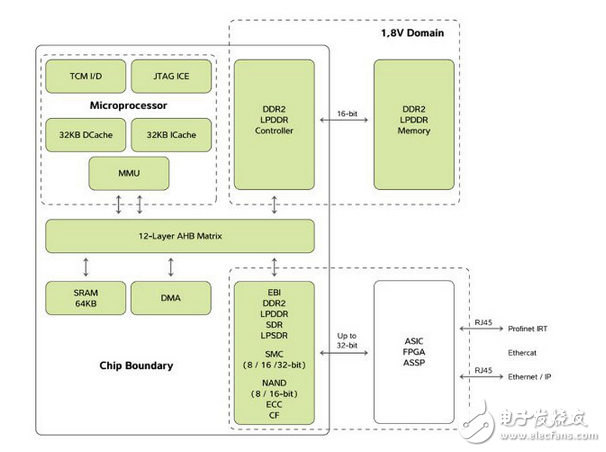
资料下载

基于以太网的分布式嵌入式系统性能提升
基于以太网的分布式嵌入式系统性能提升
低端,低成本的网络,如CAN和其他现场总线互连在分布式嵌入式系统中无处不在,但现在许多应用程序需要更多的带宽,尤其是多媒体进入嵌入式空间和工业应用。基于以太网的网络可以支持更高的带宽要求,并且仍然通过添加到基线标准的专门网络层来支持实时应用需求。让我们评估一下可以应用于工业控制等应用领域的可用网络。我们还将考虑支持这种快速网络的微控制器(MCU)和嵌入式微处理器技术,以及如何在嵌入式应用程序中实现这些协议。
现场总线技术、工业和家庭控制中心的互连,已自微控制器和微处理器侵入工业控制空间用于连接分布式控制器。这种趋势开始于处理器节点之间的点到点RS - 232链路,并与现场总线标准(如PROFIBUS)连接在一个互连上的多个节点发展。控制器区域网络(CAN)作为一种来自汽车世界的选项来实现,但这些技术都没有提供以太网带宽和IT空间驱动的带宽的恒定带宽。

Just as with other embedded-computing segments, the control space saw many reasons to pursue an Ethernet-based control network. The IT world was driving down the cost of supporting Ethernet and the IT world would guarantee faster physical-layer technology over time.
In reality, the embedded space has long used Ethernet as applications such as factory-control systems tied to the IT infrastructure. However, those uses are really just IT implementations in disguise. Many embedded systems need connections to the Internet or private networks, and you can find standard Ethernet support on relatively low-end MCUs these days.
声明:本文内容及配图由入驻作者撰写或者入驻合作网站授权转载。文章观点仅代表作者本人,不代表电子发烧友网立场。文章及其配图仅供工程师学习之用,如有内容侵权或者其他违规问题,请联系本站处理。 举报投诉
- 相关下载
- 相关文章





